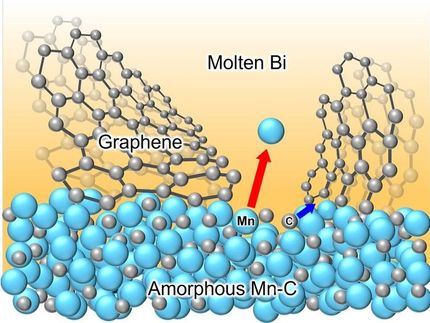Hybrid electrolyte enhances supercapacitance in vertical graphene nanosheets
supercapacitors can store more energy than and are preferable to batteries because they are able to charge faster, mainly due to the vertical graphene nanosheets (VGNs) that are larger and positioned closer together. VGNs are 3-D networks of carbon nanomaterial that grow in rows of vertical sheets, providing a large surface area for greater charge storage capacity. Also called carbon nanowalls or graphene nanoflakes, VGNs offer promise in high-power energy storage systems, fuel cells, bio sensors and magnetic devices, amongst others.
Using VGNs as the material for supercapacitor electrodes offers advantages due to their intriguing properties such as an interconnected porous nanoarchitecture, excellent conductivity, high electrochemical stability, and its array of nanoelectrodes. Advantages of VGNs can be enhanced depending on how the material is grown, treated and prepared to work with electrolytes.
"Performance of a supercapacitor not only depends on the geometry of electrode material, but also depends on the type of electrolyte and its interaction with the electrode," said Subrata Ghosh of the Indira Gandhi Centre for Atomic Research at Homi Bhabha National Institute. "To improve the energy density of a device, [electric] potential window enhancement will be one key factor."
Ghosh and a team of researchers discovered ways to improve the material's supercapacitance properties.
According to modeling, VGNs should be able to provide high charge storage capabilities, and the scientific community is trying to unlock the keys to reaching the levels of efficiency that are theoretically available. Needed improvements to be viable include, for instance, greater capacitance per unit of material, greater retention, less internal resistance, and greater electrochemical voltage ranges (operating potential windows).
"Our motivation was to improve VGN performance," Ghosh said. "We have taken two strategies. One is inventing a novel electrolyte, and another is improving the VGN structure by chemical activation. The combination of both enhances the charge storage performance remarkably."
The researcher team treated VGNs with potassium hydroxide (KOH) to activate the electrodes and then allowed the treated electrodes to interact with a hybrid electrolyte, testing the formation of the electric double layer at the electrode/electrolyte interface. They also examined the morphology, surface wettability, columbic efficiency and areal capacitance of VGN.
The novel electrolyte they created is a hybrid that combines the advantages of aqueous and organic electrolytes for a novel hybrid organo-aqueous version that works to increase supercapacitor performance of VGNs. Using an organic salt, Tetraethylammonium tetrafluoroborate (TEABF4), in an acidic aqueous solution of sulfuric acid (H2SO4), they created an electrolyte that extended the device's operating window.
Improvement of VGN architecture was associated with the process of KOH activation, which grafted the oxygen functional group onto the electrode, improved electrode wettability, reduced internal resistance and provided a fivefold improvement in capacitance of the VGNs. The activation approach in the paper can be applied to other supercapacitor devices that are based on nanoarchitecture, Ghosh said.
"Aqueous and organic electrolytes are extensively used, but they have their own advantages and disadvantages," he said. "Hence the concept of hybrid electrolyte arises."
Original publication
See the theme worlds for related content
Topic World Battery Technology
The topic world Battery Technology combines relevant knowledge in a unique way. Here you will find everything about suppliers and their products, webinars, white papers, catalogs and brochures.

Topic World Battery Technology
The topic world Battery Technology combines relevant knowledge in a unique way. Here you will find everything about suppliers and their products, webinars, white papers, catalogs and brochures.





























































